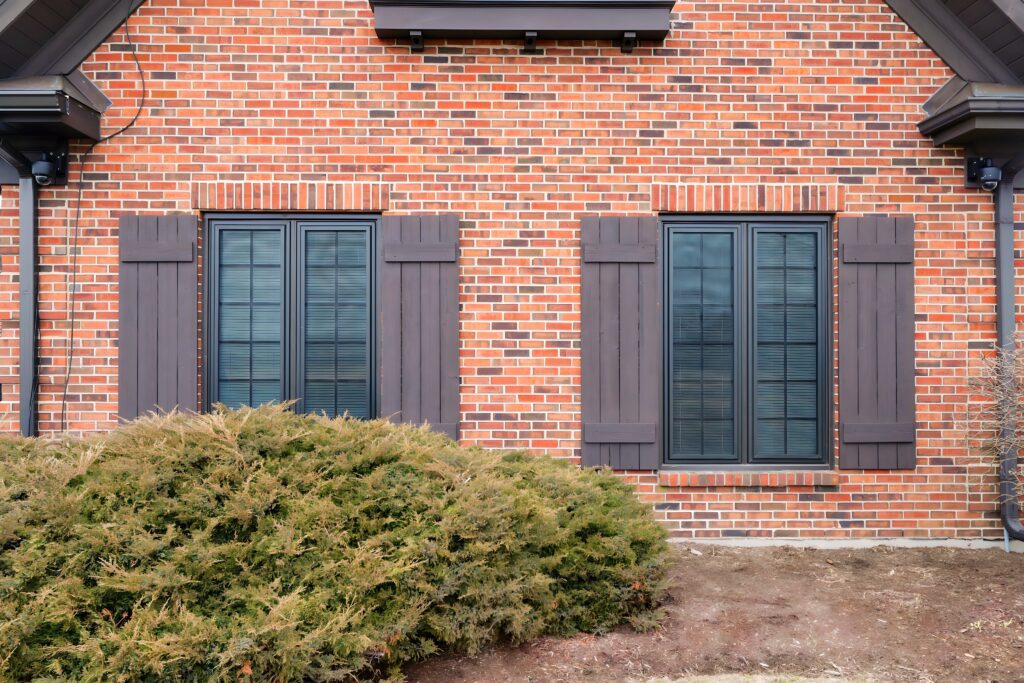When strong winds blow and menacing clouds loom overhead, having the right protection for your home is essential. Homeowners have a variety of options to consider, from rolling shutters and impact glass to hurricane fabric and hurricane panels. We’ve compiled a list of some of the major options for protecting what matters most before, during, and after the storm.
Rolling Hurricane Shutters

Permanently installed on windows and other openings, rolling shutters are some of the most robust and flexible solutions of all hurricane protection. In addition to protection from high winds, solid aluminum shutters also offer shading, cooling, and security when deployed. They cover openings when needed – retracting into box housings that hide away the curtain when not in use, and then are readily available when weather or security require their deployment. They can be used for large patio or lanai openings as well, creating a safe, secure, and dynamic outdoor space for homeowners and their families.
Rolling shutters are available in manual and motorized configurations, with many motorized shutters able to integrate with smart devices. And because of the color options and styles, they offer an attractive look that can easily integrate with your home’s aesthetic. Premium manufacturers offer shutters combining strength and small box size, so consider those differences when choosing which shutter to purchase. Shutters offer more strength and protection than other solutions but may come at a higher cost than less effective or less aesthetic alternatives.
Impact Glass
Impact glass can offer solid protection from a storm. Because these windows are installed directly into your home, they offer a great look and can let in a lot of light. They can also be customized to fit a wide range of openings, although weight can limit functionality in certain configurations.
Hurricane impact glass is the most expensive option. It typically requires new construction or significant retrofit re-configuration to ensure proper installation, raising initial costs. While impact glass is designed to be resistant to water and wind, leakage can occur due to sealant failure, installation gaps, or intense weather. If leaks do occur, the effected windows may need to be replaced or refitted into repaired openings.
Hurricane Fabric
Hurricane fabric offers modest levels of hurricane protection for a wide range of applications. Available in both fixed-size panels and rolling styles, this material can cover any opening on your home.
While easy to install, fixed panels can require clips and other hardware to install and can damage the overall look of your house. Rolling options are available in manual or motorized configurations and can be selected with fabrics that provide solar control, insect protection, and hurricane protection. They can allow natural light and a degree of airflow when deployed.
While many hurricane fabrics are treated for UV protection, some fabric can degrade over time with exposure. Depending on track method, fabric can stretch and lose tension causing an unappealing sag in large or high-exposure openings. Size options may be limited depending on hurricane PSF (pounds per square foot) rating you need for your area, so understand requirements in your area to see if hurricane fabric is right for you. Price is typically slightly less than hurricane shutters or impact glass.
Accordion Shutters
Accordion shutters offer a medium level of hurricane protection at a lower price point than rolling products. They can protect extremely wide openings and operate around corners if required.
Unlike rolling shutters that hide away when not in use, accordion shutters are often visible on the left or right of the opening. Some homeowners find their stacked appearance less appealing than other options. Customization can be limited with accordions compared to other shutter configurations. Horizontal tracks often require cleaning and ongoing homeowner maintenance. They are most often used on first-floor applications due to their manual operation, which can be cumbersome depending on opening width.
Hurricane Screens

Hurricane screens, like our stainless-steel variety, are fixed or egressable panels that surface mount to openings in your home.
Mesh creates light and allows extra airflow into your home like a traditional window screen, while providing protection from wind-born projectiles and rain. In addition to storm protection, they offer a security layer against potential intruders by creating a visible barrier. Some manufacturers offer custom shapes to fit your window opening type.
Hurricane screens are affixed to your building and always deployed. While blending well with most aesthetics, they are viable for some architectural styles. They can limit visibility compared to other options. Screens are less expensive that rolling products or impact glass, but more expensive than fixed panels or similar options.
Bahama Shutters
Bahama shutters offer some of the most attractive options on the market because of their style and shape and, like rolling shutters, can have customized colors to match your home’s outside décor.
Typically constructed from aluminum, they are permanently installed to your home, and the slatted panels allow light and air when open. They’re also inexpensive and require limited maintenance. These shutters are not as secure as many other options, can only be implemented manually, and may not match certain building aesthetics.
Hurricane Panels
Panels are typically the least expensive but least convenient hurricane protection option. They are available in aluminum, steel, or polycarbonate. Unlike most other options, they are attached to the home only in preparation for a specific storm event and are stored in a garage or other location until needed.
Bracketry or wall installation pegs can be a detriment to your home’s look, and hardware can easily be lost during put-up / take down. Installation on a home’s second or third story may require ladders and other equipment that can be difficult to obtain or use in the run-up to a storm.
Plywood
Lastly, plywood board-up offers a low level of protection before a storm hits. While available in day-to-day situations, plywood or similar items are seasonally priced, can get expensive during hurricane season, and may be unavailable if a storm is imminent. This option is extremely labor intensive, can create holes and other aesthetic problems to your house, and will need storage after the storm.
Protecting Your Home Before the Storm
It’s best to consult a hurricane protection expert, like a hurricane shutter dealer or manufacturer, that can offer you the best advice on what to choose for your specific situation. They’ll help you determine the product that best fits with your protection needs, building code requirements, architectural style, and budget.

